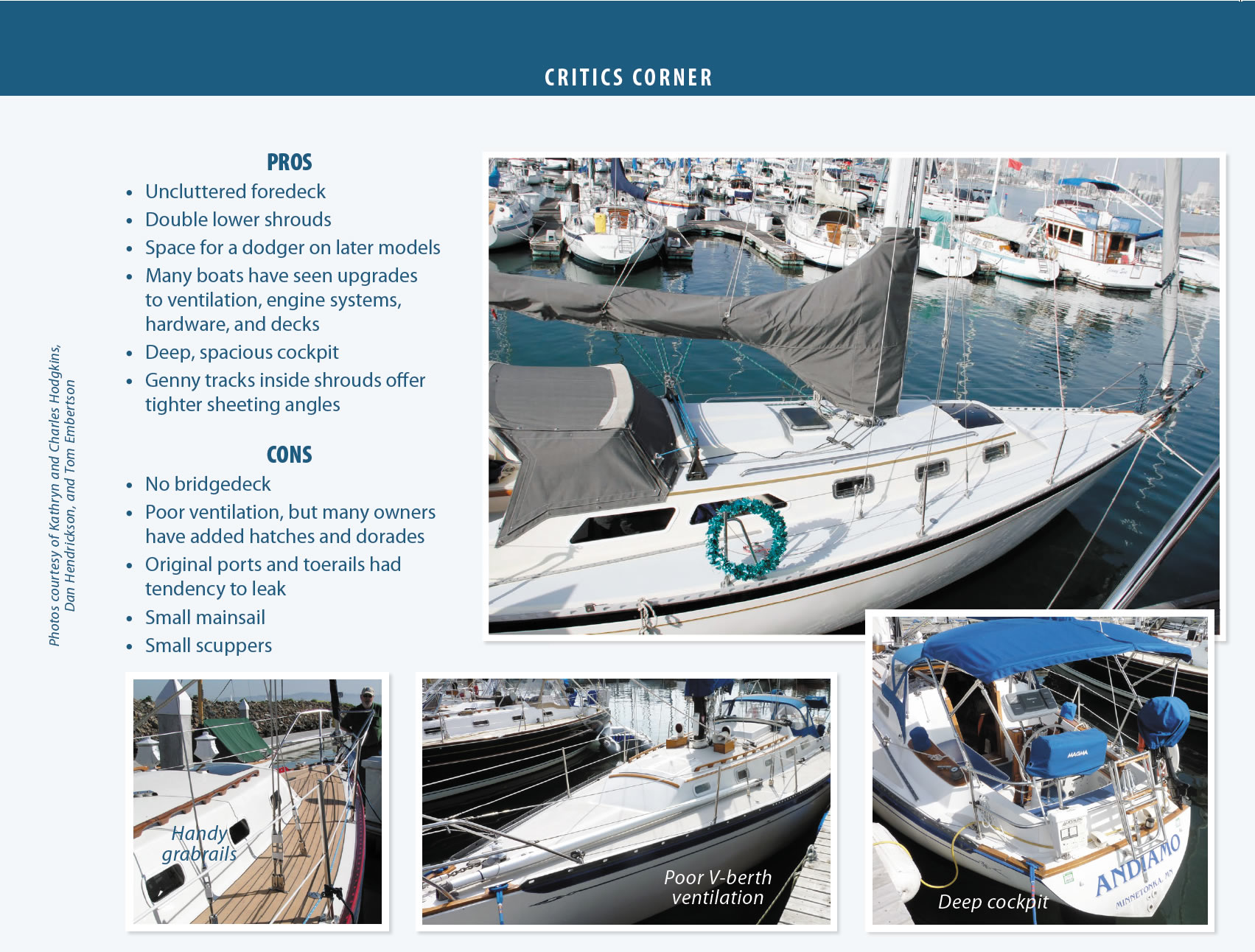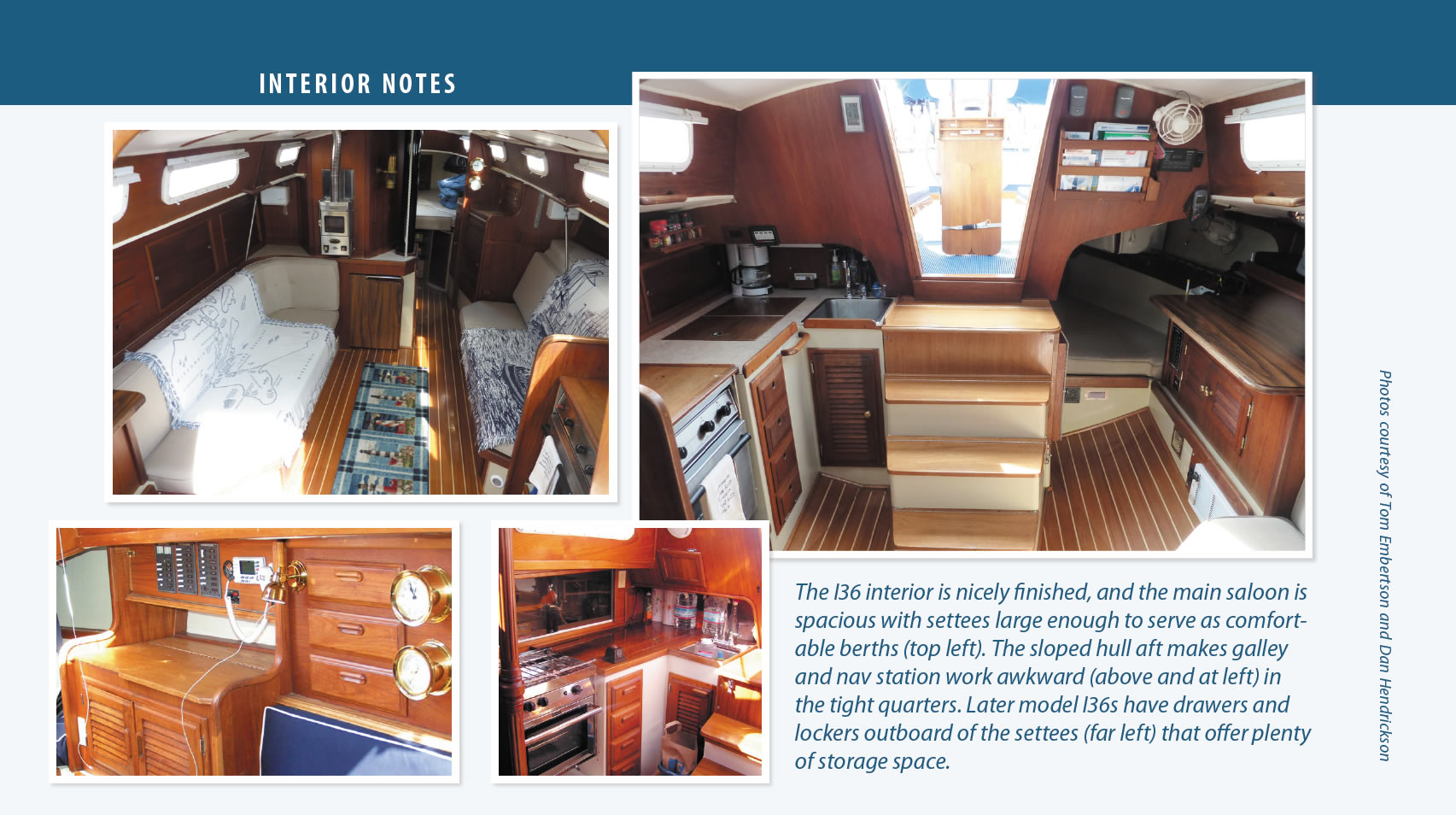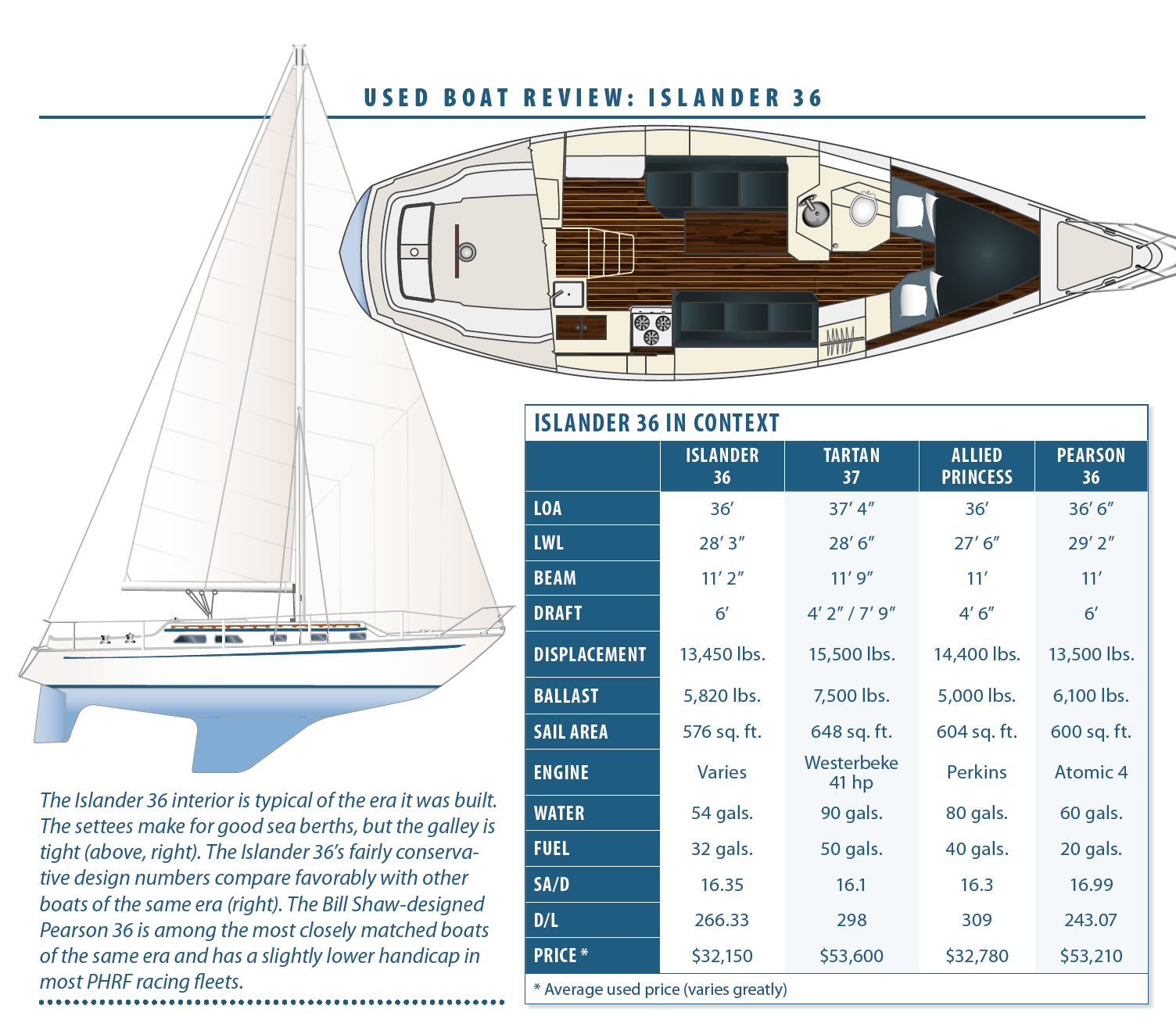The Islander 36 was built from 1971 to 1985, making it one of the longest-lived 36-footers ever on the U.S. market. More than 750 of the Alan Gurney-designed racer-cruiser sloops were built, with production spanning almost the entire history of Islander Yachts.
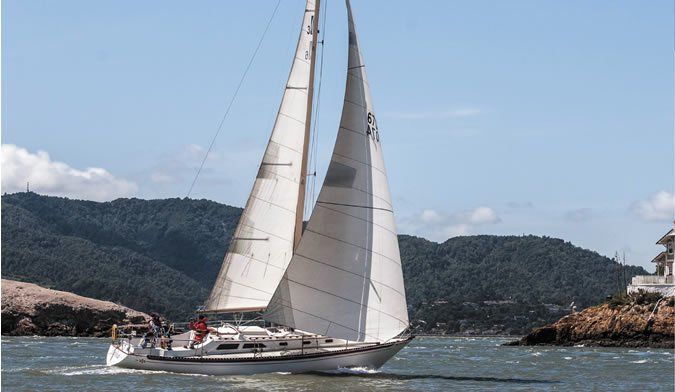
When it was first introduced, the Islander 36 seemed conservatively modern in appearance, with a flattish but concave sheerline, a fin keel, and a skeg-mounted rudder. The boat was designed as a racer-cruiser under the then-new International Offshore Rule (IOR) , but you would be hard-pressed to say that the same rule could create both the I36 and a modern IOR design. The Islander 36 was launched during the infancy of the IOR, before boat designers took advantage of the rules loopholes. As a result, its hull shape is undistorted and bears more resemblance to a modern fast cruiser than to a contemporary IOR racer.
While custom boats were the biggest force in racing in 1971, it was still possible to be competitive in local regattas with a production racer-cruiser. That all changed very quickly. Boats like the Islander 36-which were out-designed under the IOR but were still reasonably fast and easy to sail-served as the foundation for the movement that became the Model A of handicap racing: the Performance Handicap Racing Fleet (PHRF). And still today, I36s often take podium positions in PHRF races, particularly where I36 fleets are most popular, particularly in the San Francisco Bay area.
Even by todays standards, the hull proportions of the Islander 36 are nearly ideal for a modern racer-cruiser. The beam is moderate and carried well aft, offering fairly good hull volume aft, so that the boat does not squat excessively when cockpit lockers are loaded with cruising gear. Despite the age of the design, the I36 is not dated in appearance. You could even say that the boat is a modern classic.
The Islander 36 is predominantly a West Coast boat, but youll find them throughout the U.S. Most of the owners responding to our survey use the boat for daysailing, club racing, and coastal cruising.
Sailing Performance
Despite being designed as a racer-cruiser with an IOR Mk I rating of 27.9, the Islander 36 was not a particularly fast or successful IOR boat. However, under the PHRF rating system, a well-sailed Islander 36 is a reasonably competitive boat; many are still active in club racing, with the largest contingent in California, where conditions are a good match for the I36.
The Islander 36s rig is a simple, untapered aluminum spar stepped through the deck. It has two sets of spreaders and double lower shrouds. The shrouds are set well inboard, and genoa tracks are set just outboard of the cabin trunk to take advantage of the tight sheeting angles.
The Islander 36 is well-balanced under sail, although like many boats of its era with relatively small mainsails, you need a variety of headsails to keep the boat moving her best in all conditions. While this isn’t a problem on a crewed racing boat, todays fast cruisers tend to have slightly larger mainsails so that less-frequent headsail changes are required. The original I36 sailplan shows genoa overlaps as large as 180 percent; genoas that large are generally a nuisance to handle and tack.
Both deep and shoal draft keels were available on the Islander 36. Most boats have the deep keel, and this version of the boat is generally about six seconds per mile faster. The shoal-draft boat has an additional 150 pounds of ballast to compensate for the keels higher center of gravity.
The mainsheet traveler is positioned at the forward end of the companionway hatch. Late-model boats have a small molded breakwater aft of the traveler so that a companionway dodger can be installed. On boats without the breakwater, installing a dodger is trickier. Since the mainsheet is attached almost exactly to the middle of the boom, sheet loads are fairly high, and youll need a winch to trim the main in heavier air.
Original steering, mostly Edson brand, was the typical chain and sprocket with the steering cable led through sheaves to a quadrant clamped to the rudder post. The boat was designed with a tiller, but most owners have retrofitted wheel steering over the years. Since there are very few owner complaints about excessive weather helm, changing to wheel steering was more a matter of personal choice than necessity.
You will find slight differences in deck layouts, depending on whether the boat has been used predominantly for racing or cruising. On racing boats, the primary headsail-sheet winches are usually located on the forward portion of the cockpit coamings, with the secondaries aft. That position is often reversed on cruising boats. Likewise, racing boats may have most halyard and lift winches mounted at the base of the mast; cruisers use fewer winches, mounted on the mast itself. For shorthanded family cruising and daysailing-the type of sailing for which the boat is best suited-we would suggest larger-than-standard multi-speed self-tailing headsail sheet winches installed on the coaming, near the helmsman.
The I36s cockpit is very deep, which can make it challenging for some to see over the cabin when seated. Other cockpit features make it less than ideal for offshore work: cockpit drains are fairly small and there is no bridgedeck. To comply with the International Sailing Federations (ISAF) Offshore Special Regulations for offshore racing, the companionway dropboards would have to be fixed in place up to the level of the aft cockpit coaming, which would make it extremely difficult to get below.
Engine
Like most boats with a long production history, a variety of engines were used in the Islander 36-and most have been replaced over the years-making generalizations about performance under power difficult.
The I36 was first powered with an Atomic Four gasoline engine; that was followed by the undersized Palmer P-60 gas engine, the optional Perkins 4-108 diesel, and then the optional Westerbeke L-25 four-cylinder diesel. Islander even used a Volkswagen diesel engine, the Pathfinder 42 horsepower, in the 36 at one point, and by the end of the boats production run, a 30-horsepower Yanmar diesel was used. Most of these original auxillaries have since been replaced.
The most common replacement engines youll find in contemporary Islander 36s are Yanmars, usually in the 30- to 37-horsepower range. They are lighter, and with about a 2:1 reduction and a 13-inch three-blade, fixed prop, the I36 can approach 7 knots in flat water.
Given this wide variety of engines-some left-handed, some right-handed-and the mix of fixed, folding, and feathering props, Islanders will often pull from one side to another when backing up. With all but the smallest two-blade, folding props, skippers will need good seamanship skills for well-behaved backing into slips and docks. The knack is to get the boat moving astern with modest power, idle to keep speed under 2 knots, then use the large rudder and skeg to ease into a berth.
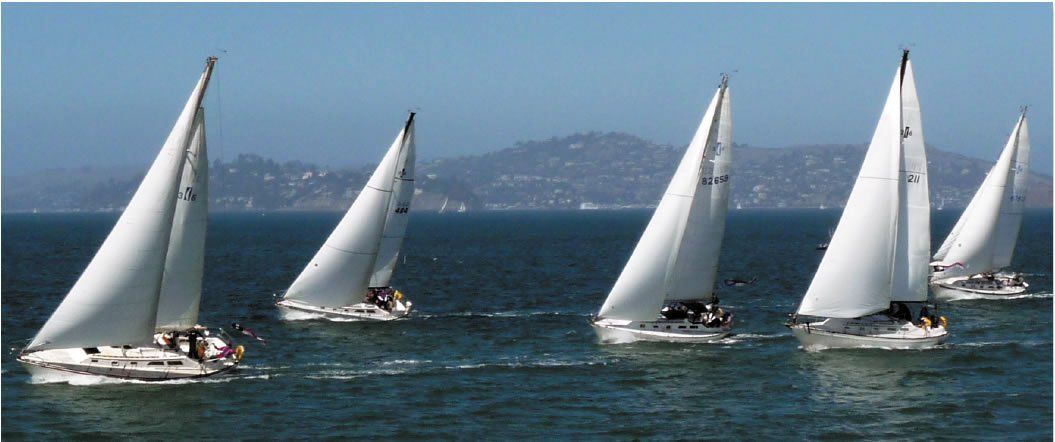
Interior
The Islander 36s interior finish is one of its best selling points. However, there are several interior-design shortcomings that are typical of boats of the early 1970s. Two of the biggest changes in boat interiors since then have been in navigation stations and galleys. The marine electronics boom had not begun in 1971. Loran C was new, and very expensive. Only hot race boats had wind instrumentation. Satnav was a far-off dream for recreational sailors, as were such things as personal computers and weather facsimile machines. For this reason, nav stations on cruising 36-footers in the early 1970s were rudimentary, when they existed at all.
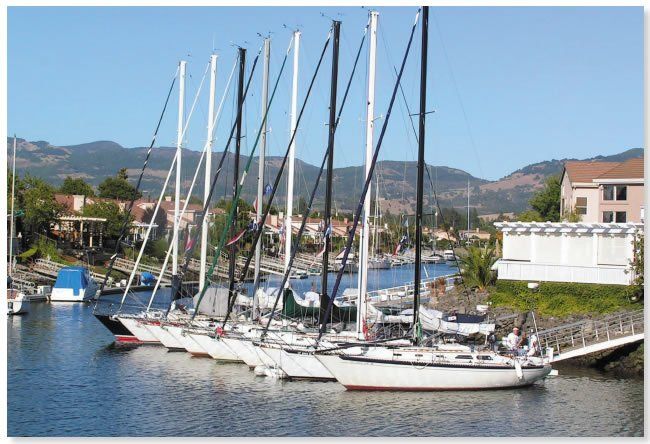
The nav station of the Islander 36 is no exception. It is tucked away under the sidedeck, and the cabin sole in front of it slopes awkwardly upward. There are no drawers beneath the chart table, no good place for chart stowage. Theres no place to sit, and if you use the shelf above the table for electronics, theres no space for books. On late model I36s, there are drawers just forward of the chart table behind the port settee, but by modern standards, the boats nav station is nothing to brag about.
The shortfalls have given owners reason to use their sailorly ingenuity and a little creativity to come up with ways to add GPS, chartplotter, AIS, SSB, and radar instruments to the cozy nav station area. Youll find as many different solutions as there are I36s on the used boat market, and the I36 Owners Association website (www.islander36.org) offers some good examples.
The original I36 galley also is a relic from the days when a lot of people considered cruising in a sailboat just one step above camping out in a tent. The sloping cabin sole in the galley makes it difficult to work at the sink or reach the bottom of the icebox. There is relatively little counter space or storage space. There is no provision for galley ventilation except the main companionway, and without a dodger, the companionway cannot be left open in the rain because of the forward-sloping aft bulkhead.
A large number of Islanders were built with alcohol stoves, many of which have been replaced with propane or natural gas. Microwaves also have been added to current I36 galleys. Some I36s were produced with refrigeration systems, and many others have been added along the way. Pressure water systems are also common in todays Islander 36s, though not universal.
Aft of the nav station on the port side, there is a quarterberth tucked completely beneath the cockpit. The lack of ventilation in the quarterberth is a problem in warm climates, and its location is not one for the claustrophobic.
The main saloon itself is quite comfortable. The settees on either side are long enough to be comfortable berths. The starboard settee folds out into a double berth, but it is not the most convenient to set up or use. Above and behind each settee, there is a fair amount of storage space. Late model boats have lockers and drawers outboard of the port settee, while earlier boats have only a shelf. It would be fairly easy to build storage lockers in this area on an older boat, and many owners have.
Most boats of this size have fixed cabin tables, but the Islander 36s folds up against the bulkhead at the forward end of the main cabin. It is just possible to squeeze by the table along the starboard side when it is in use.
Ventilation is a weak point in the Islander 36, as it is with a lot of boats. Late model I36s have a ventilation hatch overhead in the middle of the main cabin; theres no reason you couldnt add one to an older boat. A hatch in the cabin trunk over the forward cabin provides fair-weather ventilation, but theres no provision for air?ow in bad weather. You can add cowl vents in dorade boxes, but the installation is tricky due to the vinyl headliner. The original foam and vinyl headliners had zippers to access the backs of fittings, but they tend to corrode shut. Many owners have opted to replace the headliners.
The head compartment is to port at the forward end of the main cabin, with lockers opposite on the starboard side. Headroom of over 6 feet is carried all the way forward. Drawers under the V-berth and a narrow hanging locker to starboard offer reasonable storage. A door at the aft end of the forward cabin can be secured in the open position to provide privacy for the forward cabin.
Conclusions
Unlike a lot of boats with long production histories, there are relatively few differences between the first and last Islander 36s. This means that youll likely be able to find a well-kept boat at a pretty good price. Most have seen systems upgrades and creative interior makeovers that make this modern classic a competitor for newer used production boats. The I36 also boasts a very active and large owners association, an invaluable resource for those buying-or thinking about buying-an older used boat. Since so many Islander 36s were built, theres a well-established used boat market, and you should not have trouble reselling one in the future, particularly if youre West Coast based.
Because of the cockpit design and relatively light construction, this is not the type of boat that we would choose for extended offshore voyaging, but there have been several I36s that have successfully raced from California to Hawaii, and a number have made circumnavigations. In our opinion, the I36 is best suited for coastal cruising, club racing, or even daysailing and weekend getaways.
As with any older boat, a careful survey is mandatory. Pay particular attention to the chainplates, gelcoat condition, rig, and the mast step. We would also look hard at the engine installation, fuel system, and the hull structure near the mast. Try working in the galley and at the chart table to see if you can live with them.
All in all, the Islander 36 is a well-mannered, fast-sailing boat, at its best in a breeze. With proper, modern sail-handling equipment, it can easily be handled by a couple for shorthanded cruising. With good sails and a smooth bottom, it is also can be a competitive PHRF club racer.
Owners Comments
The boat is easy to sail single-handed, especially with an autopilot. It has great speed and points well into the wind. It offers plenty of space for a single person or a couple for full-time cruising. I upgraded the galleywitha three-burner stove and oven, and replaced the holding tanks. Im still working with the original Pathfinder 42-horsepower diesel engine. It has plenty of power, butit isn’t always easy to find parts or someone to work on it. – Len Diegel; Katana, 1980 Islander 36; Lake Grapevine, Texas
The I36 is a fun and fast boat in most wind conditions, and it does respectable in its class in local races. Improvements that would make the I36 even better would be the addition of well-placed cabin handholds to aid in moving about the cabin in bad weather, and a better-designed navigation station, which is too small and offers no place to sit. – Jack and Anneke Wolf; Trillium, 1976 I36; Muskegon, Mich.
We purchased our I36 in 2012, from the second owner who had maintained it in like new condition. This boat must represent the very best value in a coastal cruising boat for the San Francisco Bay area. Having been a racer for 40 years, my wife didnt appreciate sailing with me until we bought this boat and settled into pleasure sailing. Comfortable, stable, quick, and roomy all describe our experiences. It has put the pleasure into sailing for us. – Gene Novak; Fantasy, 1980 Islander 36, hull #581; San Francisco, Calif.
We have sailed the boat in 80-mile-per-hour winds with no problem. The Islander 36 is the perfect daysailer-coastal cruiser. My only criticism is with the galley, which is poorly designed and not very functional. – 1972 model, Texas
This is an excellent boat for cruising. It can be singlehanded with the help of self-tailing winches. Our aluminum holding tank failed. – l977 model, California
We bought the boat for its appearance, reputation, and size. Its a great boat for San Francisco Bay and the Pacific coast. Weve sailed it south to the Channel Islands and north to Canada. – l978 model, California
Very fast for a comfortable cruising boat. The boat seems to be a good compromise between being light enough to sail well and heavy enough to be safe and solid. Gelcoat has crazed in spots. – 1979 model, Michigan
The intermediate and lower shroud chainplate is pulling out of the bulkhead. – l980 model, California
The only real problem with the boat is lack of ventilation. It is an excellent blend of sailing performance for the cruising couple or club racer. I suggest looking for an older model since they are often exceptional buys and are essentially the same boat that was produced until 1984. – 1973 model, Florida
The cockpit sole is flush with the companionway sill, which is not a seaworthy setup for going offshore. The aft bulkhead is too slanted to leave the companionway dropboards out when its raining unless you have a dodger. – l980 model, Maryland
